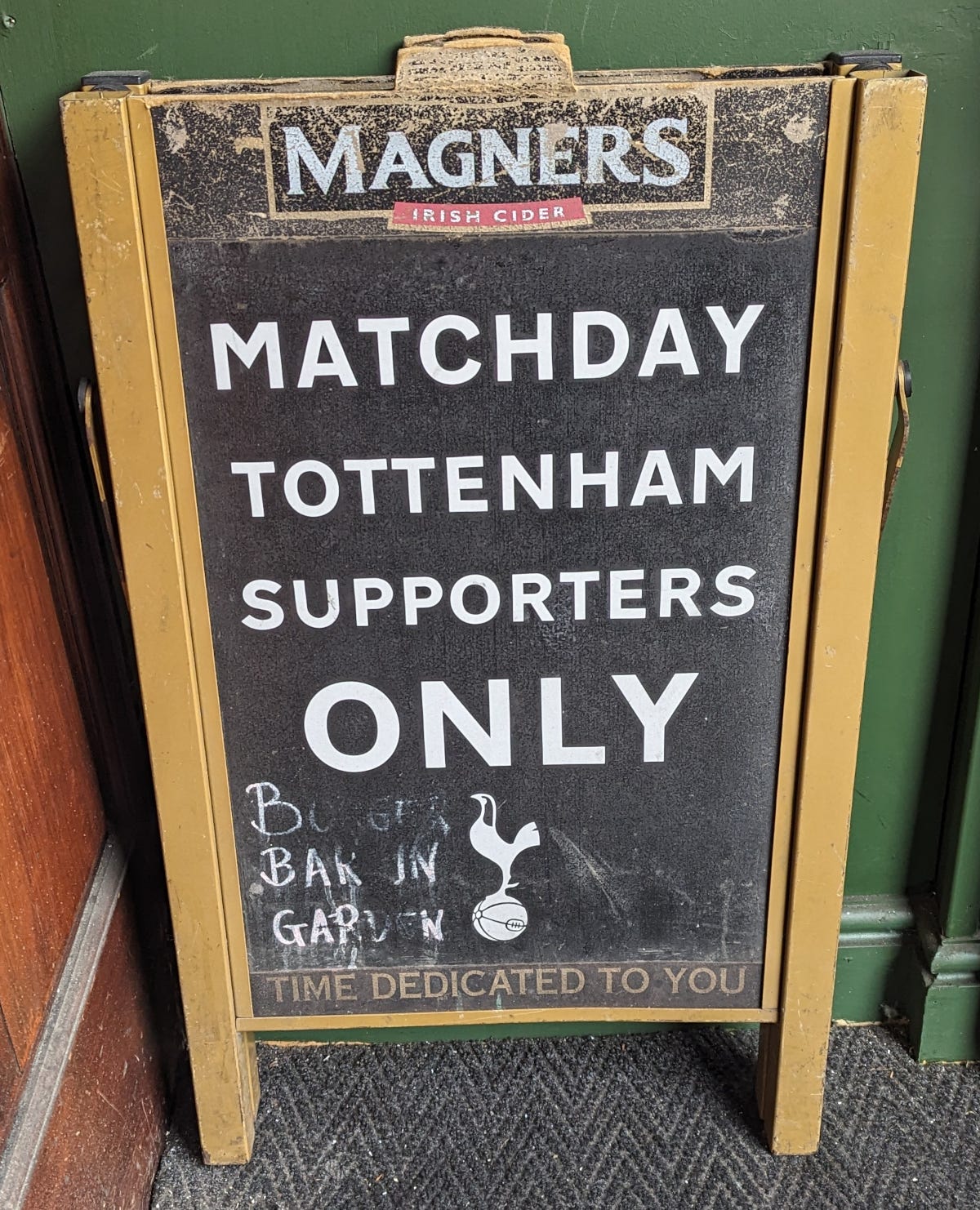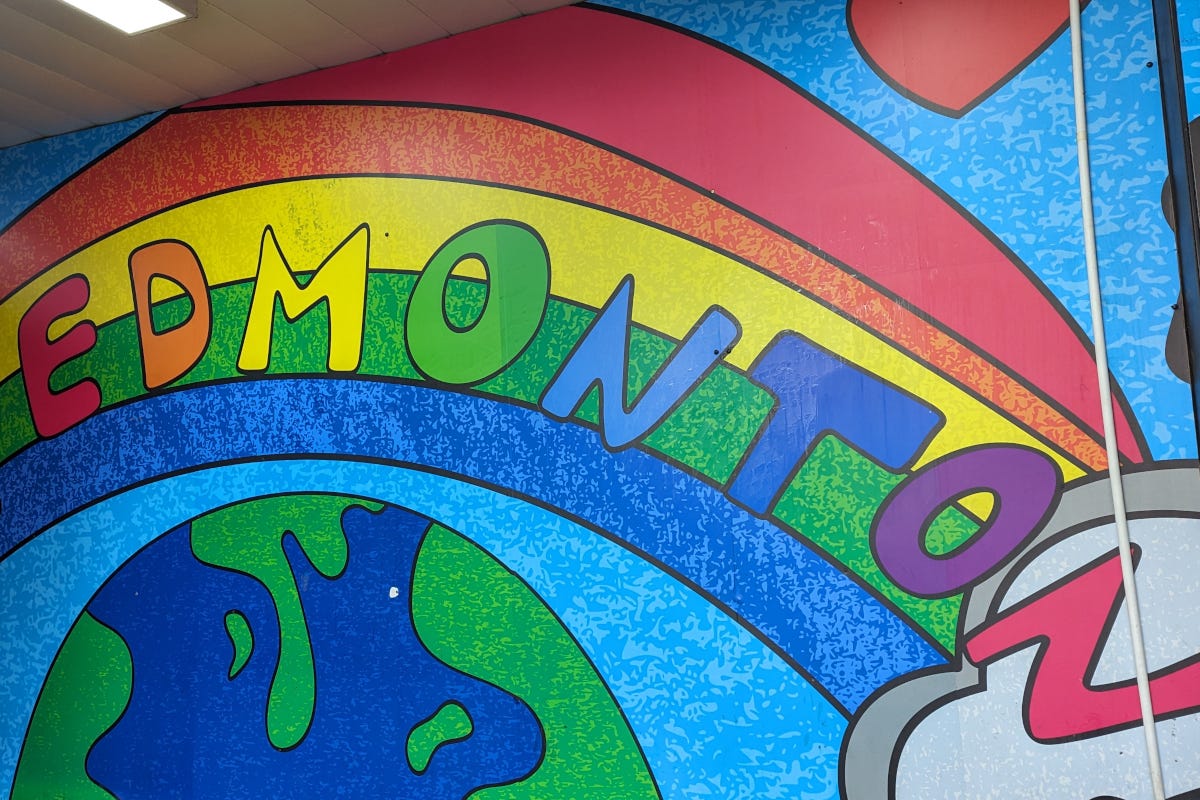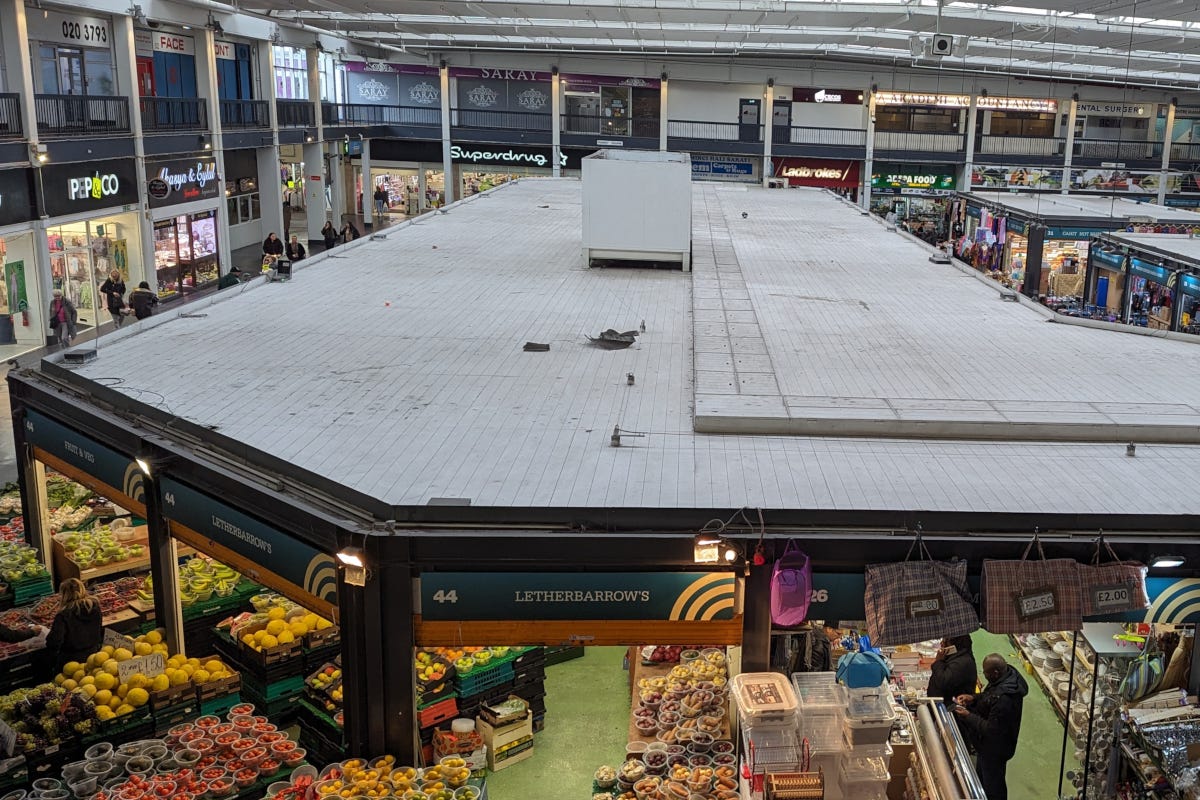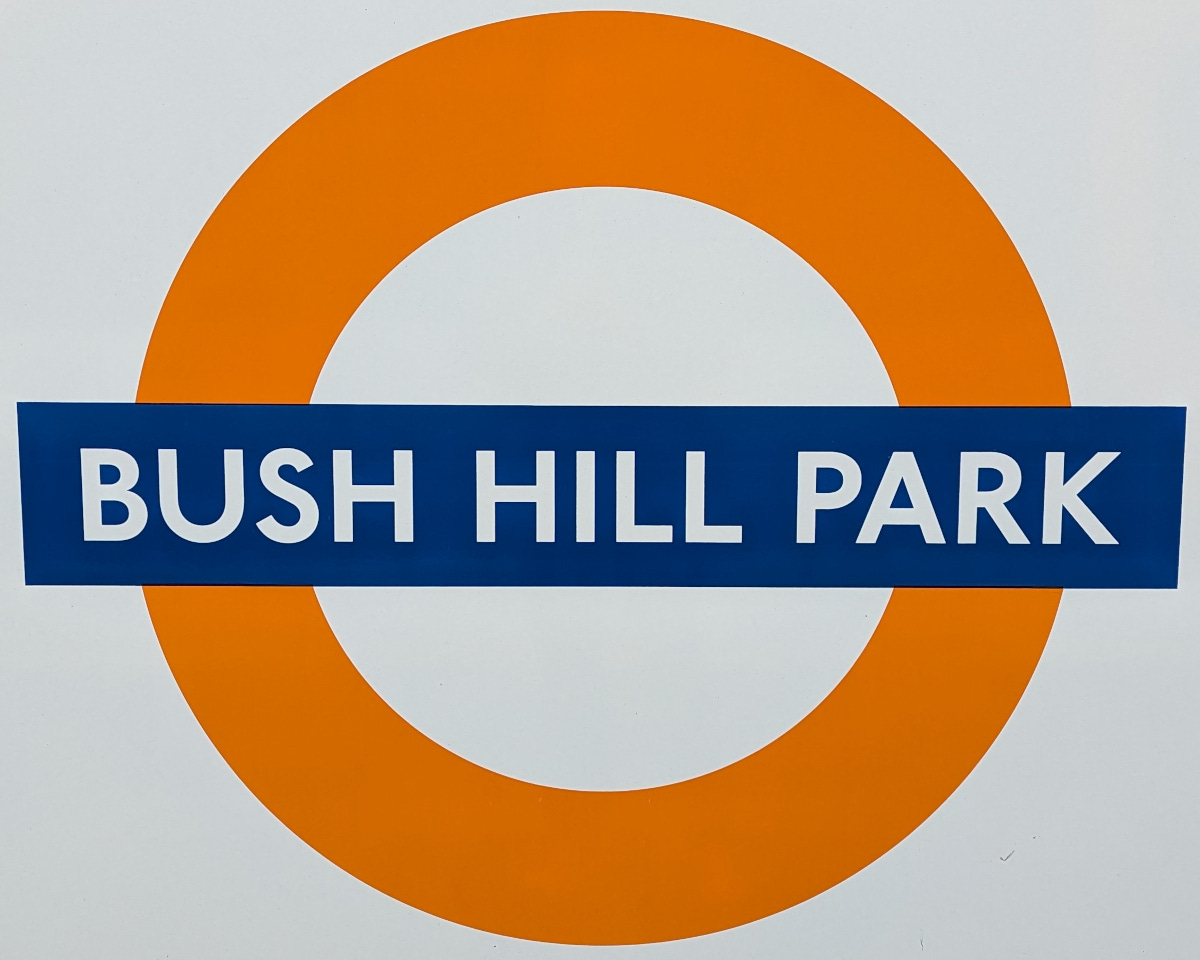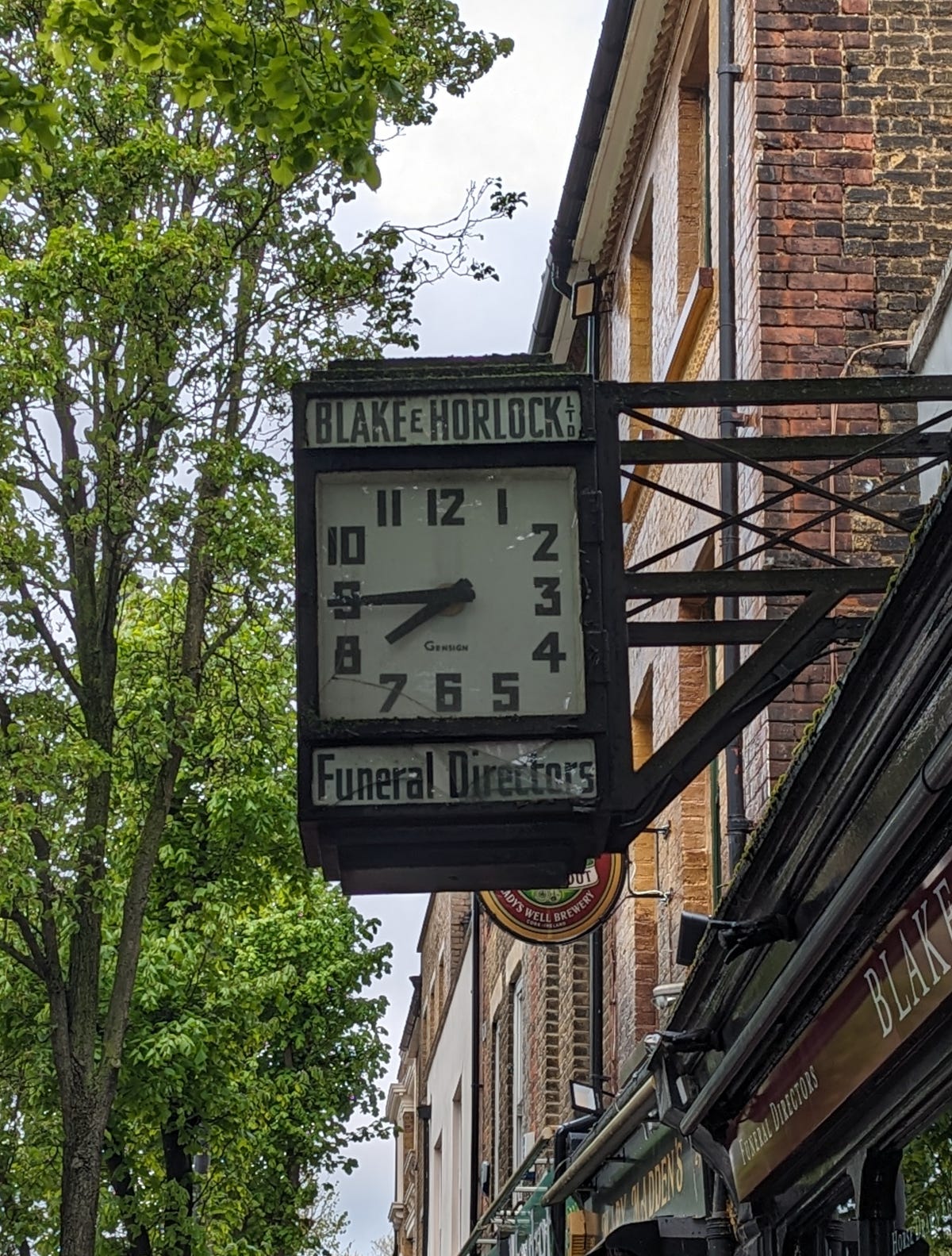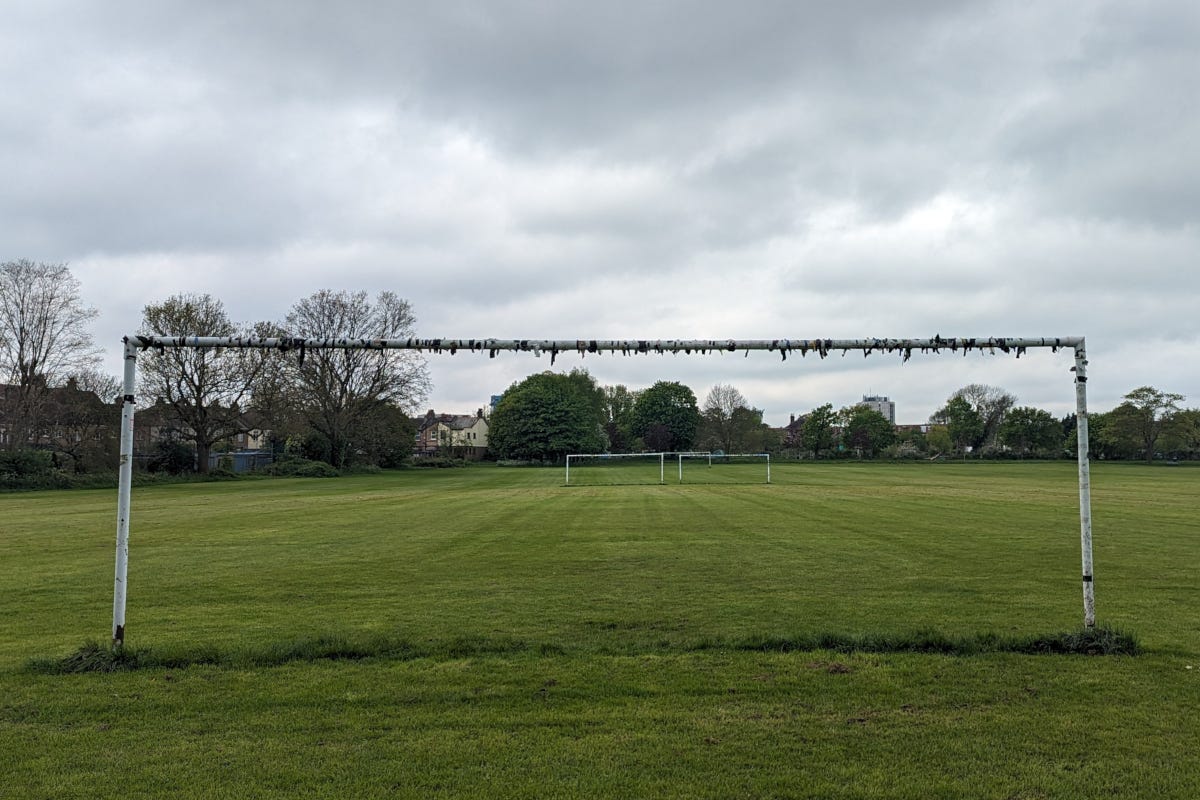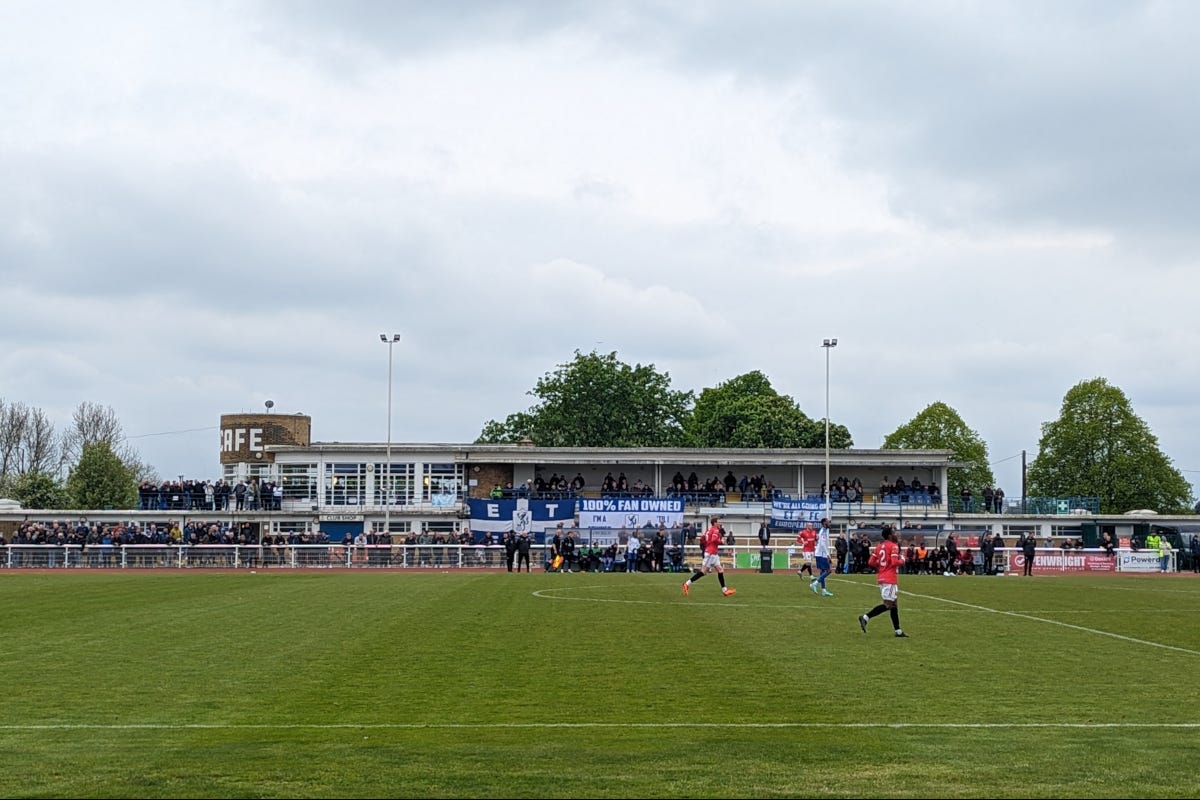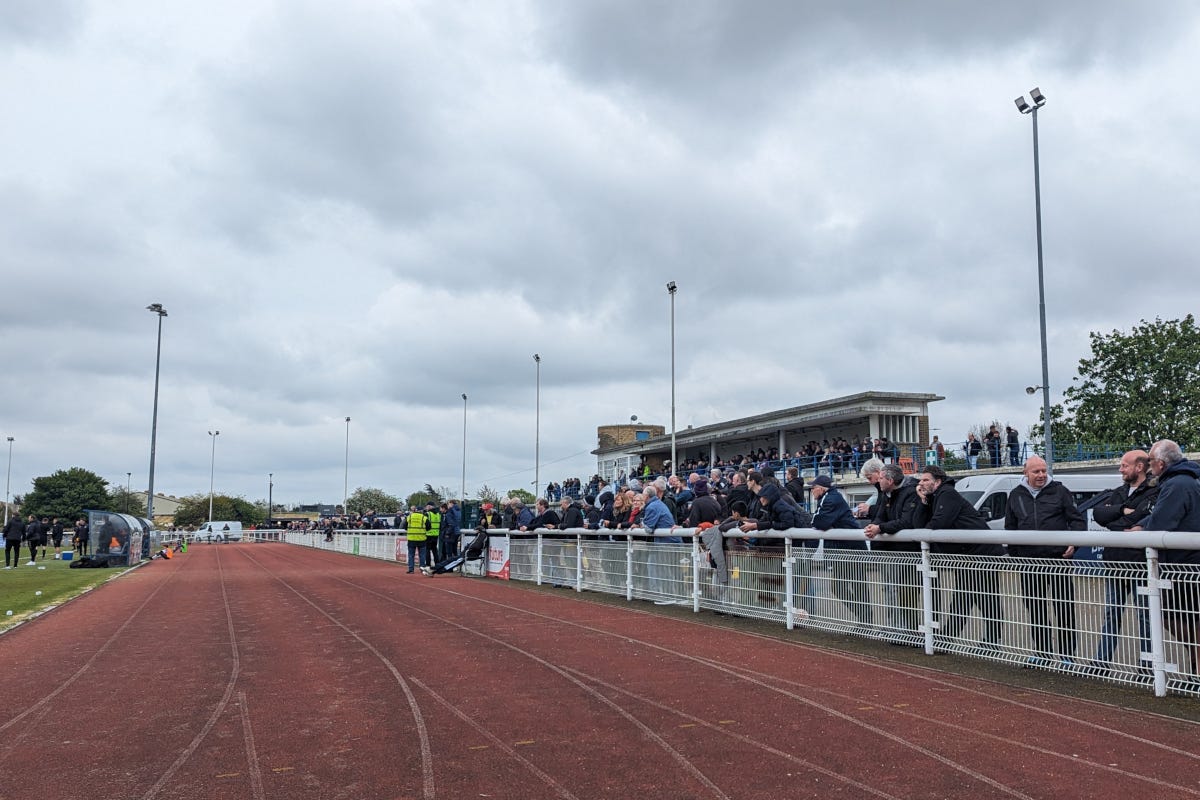A season in search of one ends up there, 60 miles from home.
Well, I didn't end up in a park, clutching a photo of my mum and sobbing uncontrollably. But at the end of a season that has essentially been about finding a home, it felt right to finish in Enfield.
It is one of the peculiarities of my childhood that it was divided into three clearly demarcated sections. The first five years of my life were spent in Edmonton, in North London, and the next five a couple of miles north, in Enfield. And then, shortly before my tenth birthday, we moved again, to Hertfordshire.
In Edmonton my life was tiny, an observable universe consisting of little more than the parking area behind the flat in which we lived, the parade of shops around the corner, and occasionally the park. Shortly after my fifth birthday, we moved. Our Edmonton flat was council-owned, but it was a two-bedroom flat and it was confirmed a bit weird by the local council that a 13 year-old girl should be having to give a corner of her bedroom over to an increasingly stinky and uncute five year-old boy.
My universe expanded a little over the next five years, but it remained very compact. A few streets. The cub scout hut. The church where mum and dad got married. The huge park over the road. An enormous circle of great aunts and second cousins, each of them living slightly different lives in identical-looking flats, most of which were still furnished with sombre-looking oak furniture from the 1930s or earlier and which smelt of lavender, mothballs, or both.
But then we moved again, in the summer of 1982. It was only 15 miles away to a village near St Albans, but for this particular nine year-old this move felt as though it might as well have been from one side of the universe to the other, a matter reflected in the size of temper tantrum that I had when I first found out about it.
Enfield could never quite be home again. It faded quickly. Over the next decade, regular trips were made back to see grandparents, but that generation, my grandparents and the great aunts, were mostly gone within a decade. And at the same time, I was gaining my independence somewhere else altogether. My friendships were being formed in a world in which, when asked who I supported in the months after we first moved, I would subsequently receive a follow-up question of, “why do you support Liverpool’s ground?”
Over time, my football allegiance turned. Without a direct transport link from St Albans to Enfield, it was just easier to watch the Saints instead. When I first went to see St Albans City play in August 1982, it felt like a case of never the twain shall meet. City were three divisions below Enfield, who were slap-bang in the middle of what would turn out to be arguably their greatest period of all. I didn’t know then that within a decade they’d be playing Boxing Day derbies in the same division.
But Enfield never left my soul completely. Those first few years felt so permanent at the time that they still live inside me to this day. I attended my first football match at Enfield. They were the first team I saw at Wembley. They were even my first away day. But a lot has changed since then. More than you’d think, and more than ever had to.
***
I alight the train at Seven Sisters railway station at 10.00 in the morning. The Tottenham Hotspur stadium looms in the distance, very much in the same way that the hills of the South Downs National Park are if I turn my head right from my own front door.
On one level, I am hilariously early. The train had left East Worthing station at 7.28 that morning. Change at Hove. Sit down. Fall asleep all the way to Victoria. I like to consider this a form of teleportation. The tube is sufficiently quiet that I get a seat to Seven Sisters.
But on another, I’m absolutely not. It is a strange quirk of my life that part of its story runs from north to south up this road, past the Tottenham Hotspur Stadium, turning from Tottenham High Road into Fore Street, Edmonton. My very first football memory is of my fingers gripping onto a white painted ledge, peering through the 1970s, lead-petrol-yellowed gloom of a late Saturday afternoon at a twinkling white haze in the distance. It looked like an alien spacecraft had landed. In actuality, of course, it was White Hart Lane.
“Tell me you’re in Tottenham without telling me you’re in Tottenham”, urge ‘Chicken Excel’ and ‘Speedo Chicken’, continuing the excellent tradition of giving mildly absurd names to the numerous fried chicken joints which dot the area. Passing the legendary ‘Chick King’, there’s even time for a half in The Bricklayers Arms, possibly the definitive Spurs pub, before continuing on towards the Angel.
Somewhat ironically, considering all of this, I was born near a different Angel, in Islington; the heart of enemy country. It was an accident of fate, really. The Royal Free Hospital had an annexe on Liverpool Road. My mum was small and at 37 years old, by the standards of the time old, so I was to be born by caesarian section.
She did later tell me that my arrival into the world three weeks early did at least allow her to fulfil one of her lifelong ambitions, to be “rushed across town in an ambulance with the siren going off”. She had, earlier in her life, spent a few years as the receptionist in a hospital. And people wonder where I get it from.
This part of Upper Edmonton is too removed from me to feel much like home. Put simply, I just have too few memories, just a few faded snapshots. Just across the North Circular and past Silver Street station is Pymme’s Park, but not even visiting there triggers any submerged memories. I am not, as I feared beforehand I may have been, to be found at 2pm, rolling around on the ground there in tears, clutching a photo of my mum to my chest.
If there’s one place in North London that definitely hasn’t changed, it’s Edmonton Green shopping centre. I last visited here in 2007, and it hasn’t changed since then. It was also the same in 1987. It was also like this in 1977. It was almost certainly like it in 1967, too.
It even smells the same. Only the identities of the market traders and retailers have changed. It never fails to raise a smile that, rather than give it a lick of paint and make it look good, the council seem to have instead given permission for buildings to be put in front of it, as though hiding it from the main road.
It’s only a three minute journey from Edmonton Green to Bush Hill Park by train, but alighting at that railway station feels like everything clicking into high definition when I’d previously been looking at yellowing polaroids. This is a world that I remember. We moved here in September 1977, into a new estate which had been built on top of the very numbered avenues of terraced houses—First Avenue, Second Avenue, etc—in which my parents and grandparents had lived after the end of the war.
It’s saying something that the actual estate that we lived on looks slightly down-at-heel yet at the same time hasn’t changed that much since 1982. It’s a relic from a bygone era, this; council housing for ordinary people, with a play area in the middle even though there’s a huge park just over the road. There’s a library at one end, and at the other is the school that I went to, just as my parents had; a severe red-brick building in which you might imagine the teachers may still wear mortar boards.
The estate itself is fairly ugly (particularly the stairwells, which look like upturned toilet rolls with large holes cut out of them), but that’s really the aesthetic of the era in which it was built. Even as a five year-old, I couldn’t understand why they’d chosen to coat the walls with sharp shingle which stabbed into your skin if you fell onto it; something which, happened to me a lot on account of my age.
But this little corner of North London, probably less than a square mile, contained everything I needed. Bush Hill Park itself—the park—is covered in football pitches, a fine example of the sort of green spaces that London does so well. I walk past the bottom of the road in which I have a vague recollection of a street party for the Queen’s Silver Jubilee, shortly before we moved. Bush Hill Park turns very suddenly from 1970s brutalism to greenery and quiet suburbia.
The walk into town takes me past the flat that my grandparents were moved into when the Avenues were flattened, and past the gap where the cinema used to be, but which is now the entrance to a Tesco. For anyone who’s lived here over the last thirty years this is completely normal, but to me it looks like someone just lifted the Odeon up and away as though with a cake slice and knife.
Enfield is a town. The football club is Enfield Town Football Club. The railway station is Enfield Town railway station. The main road that cuts through the very centre, past the marketplace and Pearsons department store, is even called The Town. But… well… it’s slightly more complicated than that, because since 1965 Enfield has also been a London borough.
The expansion of the city after 1945 caused this. My parents remembered the country lanes which linked Enfield to London, but for me it’s always been part of London. It has red buses. It had 01 telephone numbers and it now has 0208 ones. It’s comfortably inside the M25. It may only have been one of the boroughs for seven years by the time I was born, but as far as I was concerned that was pre-history.
And regardless, Middlesex, the county in which Enfield either is or was located, never really made any sense, stretching up into what should have been Hertfordshire and then down around London’s west side towards Heathrow and Twickenham. As a child, the idea of it being a ‘Town’ already felt like an anachronism.
But seen through adult eyes, it absolutely does make sense as a town because, well, of course it would. And it remains surprisingly unchanged. Pearsons is still there. There’s still a marketplace around the bandstand. The internationally-renowned Barclays Bank, once given a sprinkling of stardust by Reg Varney, remains exactly where it always has been. It’s even got a blue plaque.
But The Town has changed, because the world has changed. The sports hop on the corner, which used to have an outstanding selection of couple of year-old football shirts in a bin for a couple of quid each, has gone. The china shop which sold Wade Whimsies, small porcelain animal figurines which were presumably originally designed for the display cabinets of the extremely elderly but which in our cases ended up being brought by excitable eight year-olds who gave them stupid names and took them on adventures, was also long gone, as had the market stall under the bandstand which sold old football annuals and dog-eared copies of Roy of the Rovers.
On its eastward route, The Town turns into Southbury Road, a long, slightly downward incline of a road which stretches over the reservoir and into the alien world known to some as “Chingford”. I’ve made this journey hundreds of times before to the old ground, past George Spicer school and the entrance to the park, and then left, past the site of the old Enfield football ground and the playing fields, venue for away matches in the cub scout league matches for my particular pack at the very start of the 1980s.
The story of what happened to Enfield FC from around the mid-1990s on forms some of parable for the modern age, a ground sold for housing and a club forced on the road on what it soon became apparent would be a perpetual tour of other people’s homes. The Southbury Road ground fell in 1999. In 2001, the club’s supporters trust voted to break away altogether and form a completely new club, which would take its name from that push and pull between being a both Middlesex town and London Borough: Enfield Town.
The rise of Enfield Town has not been as spectacular as those of AFC Wimbledon or FC United of Manchester United, the two highest-profile clubs who followed their example, but Enfield have found their place. The search for a ground end resulted in Donkey Lane, a dilapidated athletics track on the northern side of the playing fields. It needed work, but the club put it in. The beautiful art deco main stand was renovated. Covered terraces were situated behind each goal.
Town moved into their new home in 2011. This is their twelfth season in the Isthmian League Premier Division, a modest climb from the county leagues, but one which does feel like a good fit for them. But for all that, there is a chance of upward movement this season. While Hornchurch ended up as the runaway champions, the race for play-off places remained competitive.
At kick-off time, visitors Chatham Town were in second place while Enfield were in third, two points behind them. At this level of the game, this matters. The Isthmian League play-offs are one-off matches with the higher-placed team at home, so if they met in the final Chatham would be the home team—and with an artificial pitch—unless Enfield could win. In addition to this, having also finished third two seasons ago, a win for Enfield would also constitute a record high final league position.
The atmosphere around the game is festive. Chatham have brought a large travelling support around the M25, some of whom are in fancy dress for the occasion. The queues for the bar, even with the crowd at 1,065, are lengthy, and this isn’t anything to do with speed of service. There’s a slightly boozy atmosphere around the place, as though both teams have something to celebrate by being in their respective positions in the first place.
***
So, there was a football match taking place. Regular readers already know that this is by a long way the least important part of these pieces, so here’s a summary of what happened based on the AI prompt, “Write me a 500 word report on yesterday's match between Enfield Town and Chatham Town in the style of football writer Barney Ronay” (feel free to skip it, should you wish):
The Queen Elizabeth II Stadium*, bathed in soft spring sunlight**, bore witness to a pulsating encounter between Enfield Town and Chatham Town. The Isthmian League, Premier Division clash unfolded like a well-worn novel, with twists, turns, and characters etching their names into the annals of football folklore***.
The Opening Act: A Duel of Determination
As the referee’s whistle pierced the air, the two combatants locked horns****. Enfield Town, perched at third place, sought to ascend the ladder, while Chatham Town, occupying the second spot, aimed to consolidate their position. The stakes were high, the crowd expectant.
Oliver Knight’s Symphony
The first half unfolded with the grace of a waltz***. Oliver Knight, the maestro in Enfield’s midfield, orchestrated proceedings. His deft touches and incisive passes carved through Chatham’s defense. At the 32-minute mark, Knight’s vision bore fruit as he threaded a pass to K. Isiaka, who calmly slotted home. The stadium erupted***, and the scoreboard read 1-0.
Chatham’s Resilience
But Chatham Town, no strangers to adversity, responded swiftly. Their talisman, Sam Robins, danced down the left flank, leaving defenders in his wake. His cross, seemingly destined for the heavens, ricocheted off an Enfield boot and nestled into the net. 1-1. The crowd gasped, torn between awe and disbelief***.
The Second Act: A Battle Royale
The sun dipped lower, casting elongated shadows across the pitch. Enfield’s Oliver Knight, not content with mere assists, decided to pen his own chapter. In the 50th minute, he unleashed a thunderbolt from outside the box. The net bulged, and Enfield regained the lead. 2-1.
Chatham’s Twist of Fate
But Chatham Town, like a phoenix rising from the ashes***, had other plans. Their resolve personified by Knight’s nemesis, Sam Robins. In the 67th minute, Robins atoned for his earlier own goal. A deft header off a corner left the Enfield keeper rooted. 2-2. The crowd erupted, and Robins soaked in redemption.
The Final Flourish
As the clock ticked down, both sides pushed for a winner. The midfield became a battleground***, tackles flying like sparks from a blacksmith’s forge***. But fate remained impartial, and the scoreline held. Enfield Town 2, Chatham Town 2.
Epilogue: A Tale of Two Teams
Enfield’s Knight and Chatham’s Robins stood side by side, sweat-soaked and weary. Their duel had transcended mere football***; it was a symphony of passion, resilience, and human spirit***. The fans, still caught in the throes of emotion, filed out, heads held high.
And so, the Queen Elizabeth II Stadium whispered its secrets to the evening breeze—a tale of two teams, bound by destiny, etched forever in the hallowed turf***.
Barney Ronay, signing off.
A few corrections:
*It’s now The Dave Bryant Stadium, for the club’s first chair, who died too young, only just over a month ago.
**No it wasn’t.
***Let’s not get too over-eager there, Robo-Barney.
(No, I don’t know why Robo-Barney saw fit to ‘sign off’ either.)
***
Obviously, I have more important things to do than watching a football match. A lot of people do. This ground is run by more than thirty volunteers on Saturday afternoons, as vice-chair Paul Millington tells me at half-time in the storage tank that doubles as the club shop, which is run by the equally affable membership secretary Glyn Smith. The shop is a non-league nerd’s wonderland, the top shelf heaving with the utter filth that is old copies of the Non-League Directory, the sort of publication guaranteed to make men of a certain disposition hot under the collar.
I spend much of the match roaming the ground. There’s a lot of space, and the athletics track is dealt with as well as it can be. And that space has one unintended benefit. If kids want to just kick a ball around rather than watch the match, they can do so without getting under anybody’s feet. There are picnic tables out in front of the main stand, and people standing on its balcony, most with a pint in their hands. Parents and kids, friends and young players. Family and community.
I was invited to the boardroom at full-time, tucked away in the corner of the main stand. It’s no more fancy than any of the rest of the ground. And this afternoon was to turn up one further surprise. My dad moved back to Enfield after the war, and had been a supporter since 1946. He went to the FA Amateur Cup finals of the 1960s and early 1970s, before I was born. His favourite player was Alf D’Arcy, and it was a considerable surprise to be introduced to Mr D’Arcy, who was an absolute legend of the amateur game in this neck of the woods throughout the 1950s, 1960s and 1970s.
It’s difficult to understate his career, to an audience that only remembers ‘non-league vs league’ rather than ‘amateur professional’. Alf played at Wembley five times in Amateur Cup finals, won Athenian League and Isthmian League Championships with Barnet, Enfield and Slough Town, and earned more than 40 amateur caps for England. He turned down the opportunity to turn professional with Spurs—in the 1950s, the Football League’s maximum wage meant that professional players didn’t always earn as much as some amateurs— and still counts Keith Burkinshaw and Steve Perryman among his close friends.
He is, of course, an absolute gentleman, overflowing with stories as we talk near a wall upon which hangs one of his amateur caps. I even get a photograph with him, with him looking considerably more awake than me. A lengthy train journey, followed by a lot of walking, followed by exactly three and a half pints of beer will do that to you.
It’s a long way home, because Enfield is a long way from home, these days. I can divide my life into three places. North London, Hertfordshire, and the Sussex coast. At 51 years of age, I can tot up that I lived in total 15 years in North London, 18 in Hertfordshire, and now 18 in Sussex.
Yet it’s here on the coast that I always feel like the away supporter. The Dave Bryant Stadium feels like home. On the rare occasions that I make that far north, Clarence Park at St Albans feels like home. Woodside Road and The Dripping Pan still, after all these years, still feel like dropping in on friends.
That’s not just a matter of familiarity, or how often you see them. I’ve been to Clarence Park hundreds of times. I’ve played on the pitch there, and seen every inch of every square foot of the interior of the ground. But I’ve barely been to the DBS half a dozen times. This stadium was brought back to life long after I moved on.
But because it was my founding football world, the only one with which I was familiar as a child, that spark of recognition was automatic. The colours. Some of the faces in the crowd, even. It never quite leaves you. Not completely. This is family, not friends.
And all of this is in spite of the fact that it’s not even the same club. Zombie Enfield continue to plough on a division below the Towners, albeit as a technically different entity after a 2007 bankruptcy. Enfield Town are not the club that I supported as a boy, and it’s important to recognise that plain fact.
But hang on there a moment, because… what if this one is… better? Bear with me here, because I can explain. I loved Enfield Football Club. They remain associated with some of my most-cherished childhood memories. But they were not without their problems. In 1995, for example, they were denied promotion to the Football Conference after winning the Isthmian League on account of the state of their finances.
And even those successful times are preserved in aspic, of no lasting consequence beyond the memories of those old enough to be able to remember them. Enfield hit their golden streak just as the era of the Football League being a closed shop was coming to an end. They won what’s now the National League twice without getting promoted. They won the FA Trophy twice too, bookmarking that era.
But they always struggled for crowds. The relatively close proximity of White Hart Lane was always blamed for this. And not for nothing is one of the new roads at the site of the old ground called Jules Thorn Way. His money kept the club afloat up to his death in 1980. When the Football Conference introduced automatic promotion and relegation in 1987, Enfield couldn’t cope with it. They won the FA Trophy in 1988, but were relegated from the Conference two years later and never returned.
So no, Enfield Town haven’t got back to the top table of non-league football, and they’re no longer the feared FA Cup giant-killers that they once were. And it’s reasonable to say that The Dave Bryant Stadium isn’t as well appointed as Southbury Road was. Athletics tracks around football pitches suck.
But the new club has only finished below halfway in the league once in the last decade, and they’ve never been relegated. This ground is not going to be reduced to rubble. They control their own destiny now, and the fans seem onboard with this being their primary purpose rather than some one-eyed pursuit of trophies, labouring under the name of ‘ambition’.
Yet promotion could come at the end of this season. The National League South and its bigger fish could be just weeks away. They’ll be favourites to win their play-off semi-final against Wingate & Finchley. But this shouldn’t be chased at the expense of that community. The youth teams and the women’s team matter. The club as a whole is in rude health.
***
And that’s it. The end of the regular season. Play-offs have already started in the non-league game, and any guarantee of many matches taking place on a Saturday afternoon is now at an end. I can’t undertake to midweek matches with the kids, so now seems like as good a place as any to call it a day for this season. But what was it all about?
From the outside, for those of you who’ve been reading these throughout the course of the season, my season may have looked somewhat disjointed. We’ve seen a lot. From football in a cage (after having gone to the wrong place) to a crowd of well over 20,000. Despite the absolutely abject weather, we’ve only been hugely inconvenienced twice and only completely washed out once. We’ve witnessed PA guys admonishing themselves, a team in brown playing at a former Football League ground, and we’ve been to Butlins.
Perhaps my restlessness at this age is primarily spurred by this lack of a home, in a football sense. The places that are home as a child feel different to those that become it as an adult. My children have never lived anywhere but Worthing. This is their home, and so it is that little bit of me which resides dozens of miles away will have to stay miles away. But none of the local teams have really stuck, for me.
And that’s fine. I’ve had a wander and cleared my head at the end of some long weeks, this season. You can’t go home again. That much is increasingly true of a period during which people can and do find themselves priced out of whole towns altogether. But if there’s a gladdening way to end a football season, perhaps it’s just to know that home is doing fine; thriving, whether with or without me. Good people supporting a good club. Just as it should be.





